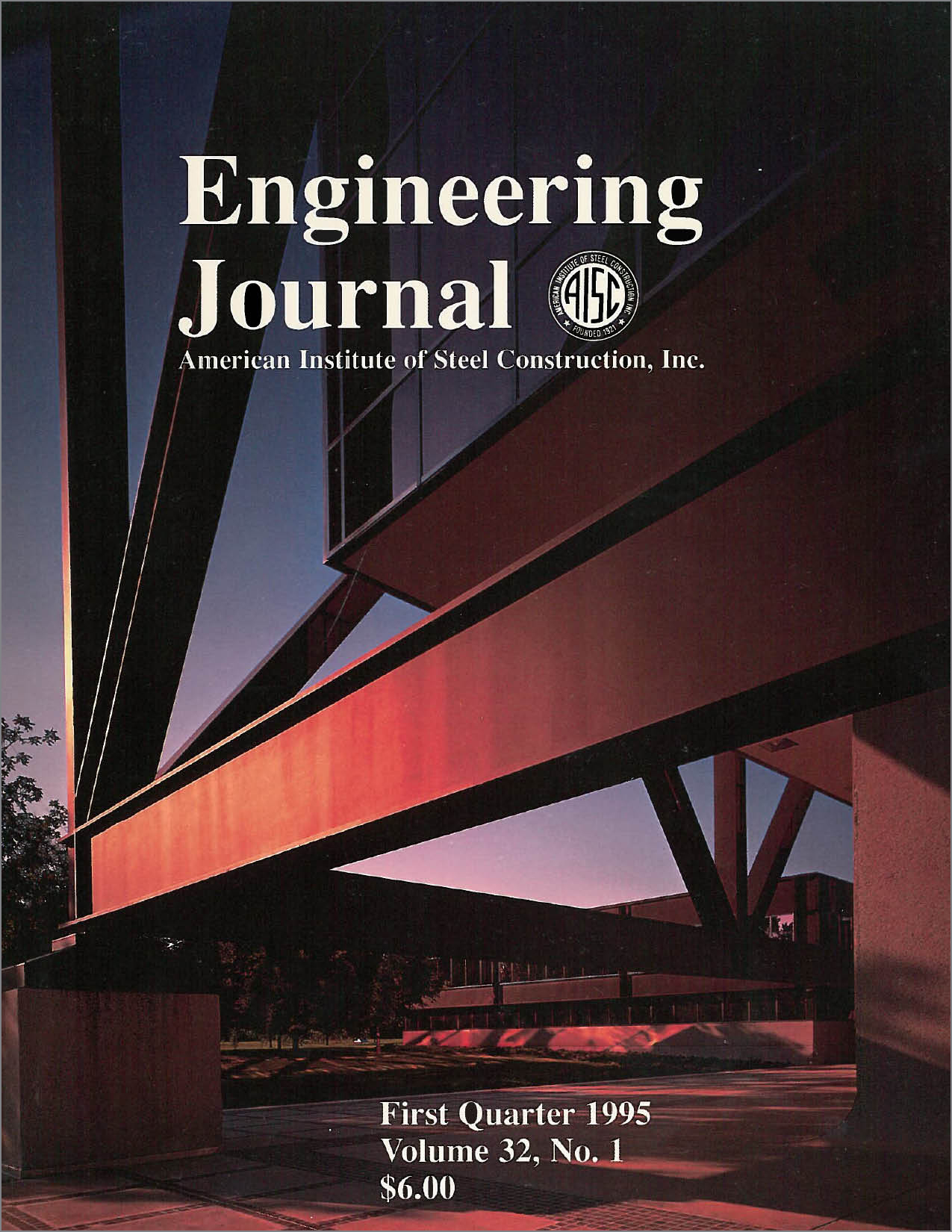An Assessment of K Factor Formulas
DOI:
https://doi.org/10.62913/engj.v32i1.639Abstract
Current structural design practices recognize that the maximum strength of frames and the maximum strength of component members are interdependent, but it is not practical to take this interdependence into account rigorously. This reasoning lends support to the Structural Stability Research Council (SSRC) technical memorandum which states that "in design practice, the two aspects, stability of individual members and elements of the structure and stability of the frame system as a whole, be considered independently." However, it is admitted that "difficulties are encountered in complex frameworks when attempting to compensate automatically in column design for the instability of the entire frame." Considerable attention has been paid in the literature to the study of different types of frame elements such as compression members, beams, bracing system and connections and also their effects on the stability of the frame and as a result, several methods have been proposed for evaluating the frame strength. However, the effective length concept for evaluating the frame strength is the most popular method for estimating the interaction effects of a framed member on the total frame stability, and it is recommended by almost all the current specifications.

